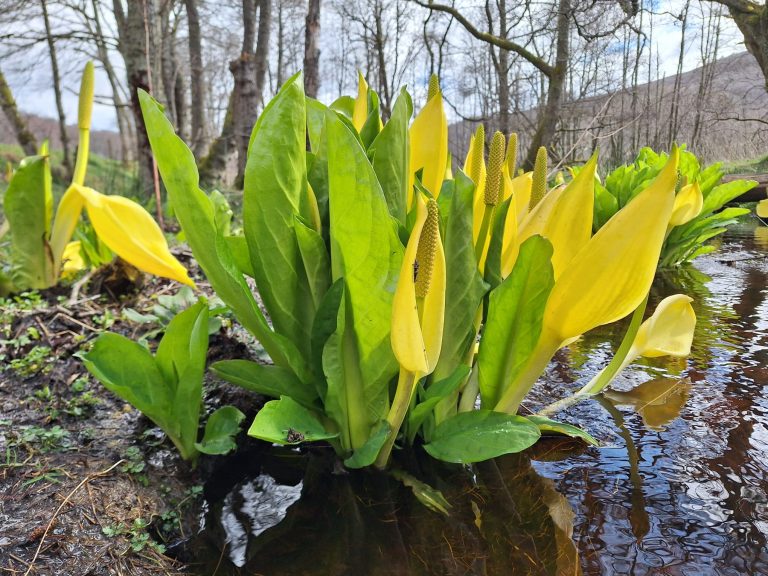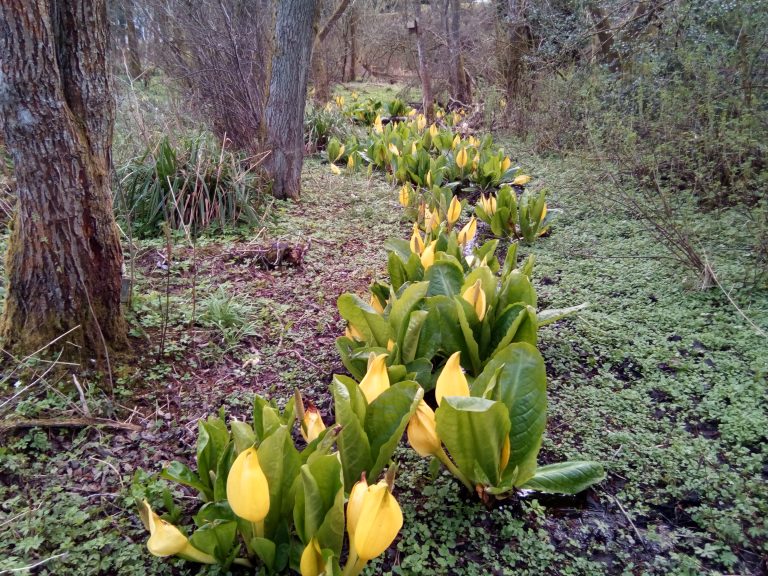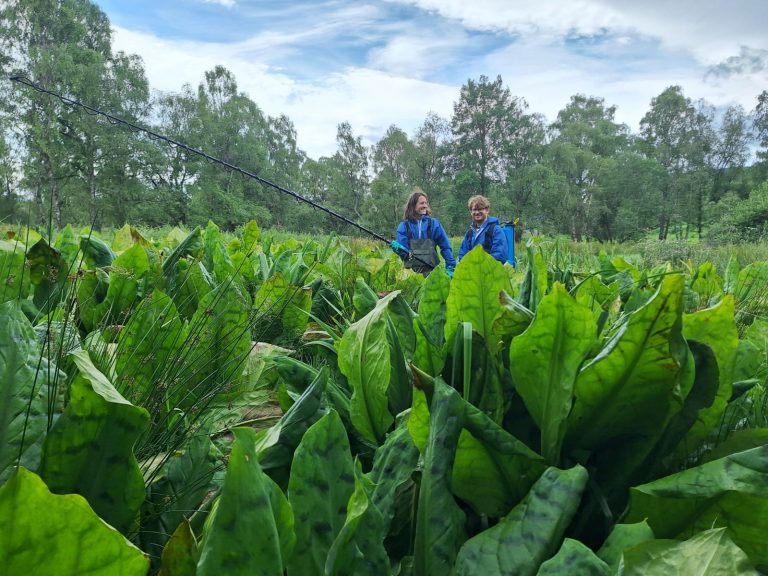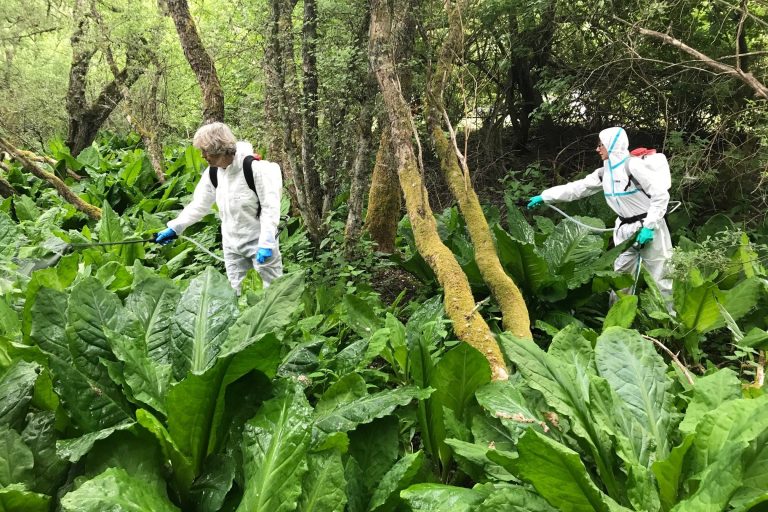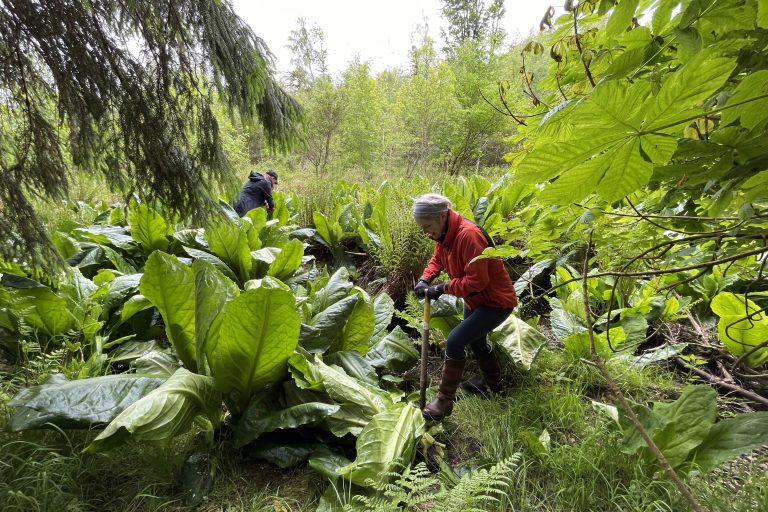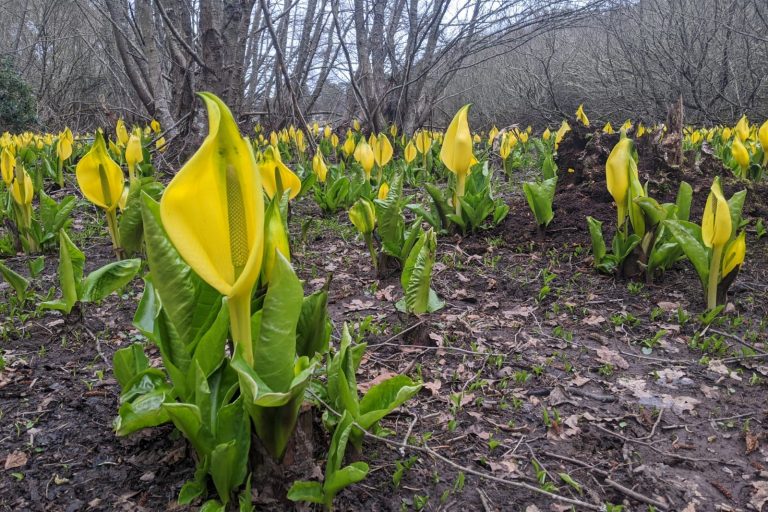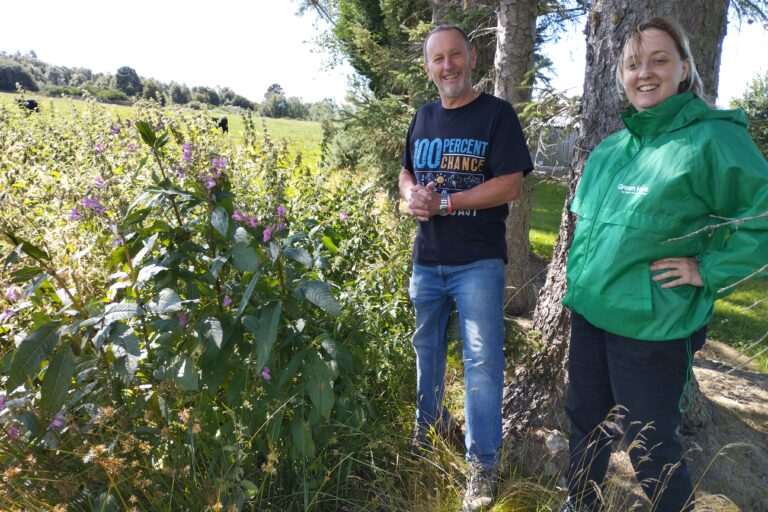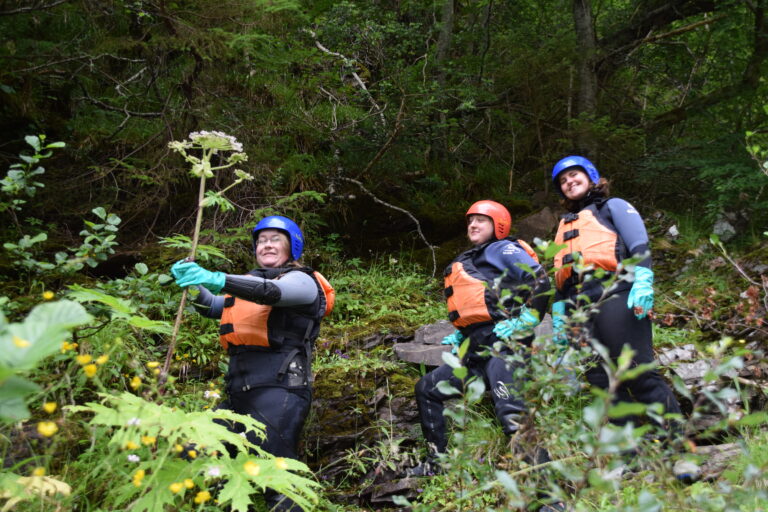Meet the plant
American skunk cabbage (Lysichiton americanus) has huge leathery leaves between 40cm – 1.5m in size, and bright yellow ‘flowers’ up to 45cm, which resemble those of Lords and Ladies. The yellow ‘flowers’ emerge first around April time, followed by the leaves. The central spike – the spadix – is covered in the tiny flowers which will bear seed. These seeds disperse via waterways but probably also by birds and animals.
It is found on pond margins, stream sides, bogs and wet woodlands.
It was widely planted as an ornamental species besides ponds and in bog gardens and was still on sale in Britain as recently as 2009. It has escaped from these garden locations into the wild.
